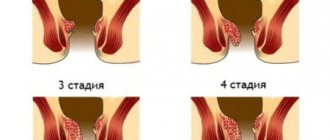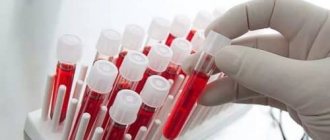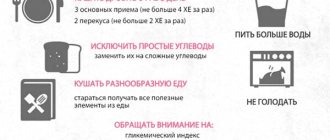Symptoms
If at the initial stage you may not pay attention to minor bleeding and itching in the anorectal area, then the symptoms of the third stage cannot be ignored.
- The same unpleasant symptoms persist, but in a more pronounced form - discomfort in the anal area, itching, burning.
- Defecation is almost always accompanied by bleeding and pain. Sometimes the pain is so strong that only a painkiller can relieve it.
- The most striking symptom of the third stage of hemorrhoids is prolapse of nodes. They gradually increase in size and appear outward during bowel movements, lifting weights, standing idle for a long time, sitting on an easy chair, sneezing, coughing. Unlike stage 4 hemorrhoids, the nodes can be straightened on their own; they stay inside. Loss does not occur at rest.
- The presence of stage 3 hemorrhoids can be determined by the appearance of the sphincter. It becomes inflamed, increases in size, and becomes deformed. There is presence of mucus.
At this stage of the disease, the likelihood of complications increases - the addition of a secondary infection through cracks, pinched nodes, tissue necrosis, thrombosis. In such situations, emergency emergency care from specialists is required, which often ends with surgical intervention.
The clinical symptoms of the third stage are characterized by the same signs as hemorrhoids in the initial stages of their development, only the symptoms are pronounced due to the size of the nodes, their number and the degree of inflammation.
The main difference between rectal pathology of this period is the prolapse of hemorrhoids with any effort without self-reduction into place. The reason is dystrophic changes in the venous blood flow system of the anorectal region, combined with weakness of the muscles and ligaments of the anus. Due to the large size of hemorrhoidal formations, the deformed muscles of the rectum become unable to support varicose veins, so they can only be reduced with the help of hands. Reduction is necessary, since in the rectum cavity they are more reliably protected from injury and strangulation.
In addition, many people notice:
- severe itching and burning in the perianal area before and after defecation, as well as during prolonged sitting;
- inflammatory exudate from the rectum irritates nearby tissues with symptoms of dermatitis or eczema, cracks form, proctitis and paraproctitis occur;
- pain during bowel movements becomes too strong and requires the use of medications;
- hemorrhoids are constantly touched up.
The symptoms are so pronounced that the person’s ability to work is impaired, and he is forced to seek help from a proctologist.
It is characterized by all the symptoms of internal hemorrhoids, with the exception of prolapse of nodes. But there are also some peculiarities:
- cavernous formations grow in volume, their skin becomes thin, so with any careless movement or straining during defecation, local bleeding opens, which is noticeable by marks on toilet paper;
- bleeding is accompanied by pain, which increases with coughing and sneezing;
- the nodes thrombose, the pain can be unbearable;
- there is a constant sensation of a foreign body in the anus;
- irritation of the perianal area causes the appearance of anal fissures, and there is a risk of secondary infection, suppuration, and ascending infection in the pelvic organs.
Hemorrhoids can be felt independently in the form of lumps surrounding the anus.
The clinical picture of hemorrhoidal disease depends on the location of the nodes in relation to the anal ring. Hemorrhoids of the first degree can be internal and external, but are practically not diagnosed in 50% of patients, since they are asymptomatic.
It all depends on the threshold of pain sensitivity. It is the pain associated with distension in the rectum or the feeling of incomplete emptying that is the first sign of discomfort in the anorectal area. The sensation occurs because the hemorrhoidal veins are dilated and protrude into the rectal canal. A person sits on the toilet for a long time; it seems to him that the bowel movement is not finished, which further aggravates the situation.
Localization of hemorrhoids inside and outside the anus
The biggest danger of the first stage of hemorrhoids is late seeking medical help, which leads to chronicity of the pathological process and its further progression.
Internal
Inflammation of the nodes inside the rectum is a sign of internal hemorrhoids. Initial manifestations of pathology:
- constant itching in the anus;
- burning, slight pain after each bowel movement;
- sensation of a foreign body in the rectum, feeling of heaviness;
- Difficulty emptying the rectum.
At the initial stage of development of internal hemorrhoids, picking up nodes is very rare. The vascular walls have not yet lost their elasticity, are strong and resilient. If bleeding occurs, it is only when there is difficulty in bowel movement. It is drops of blood on toilet paper that most often force a patient to seek help from a proctologist.
Internal hemorrhoids of the first degree can only be seen using anoscopy. It looks like dense protrusions of the rectal wall, which look like formed small hemorrhoidal cones.
The last stage of hemorrhoids is characterized by the following symptoms:
- hemorrhoids fall out of the anus and cannot be reduced either independently or manually;
- pain in the anus becomes almost constant, intensifies with defecation, walking, sitting on a hard surface, coughing and sneezing;
- bleeding from the anus becomes regular or constant;
- stool disorders, which can also be caused by psychological reasons (defecation is painful, so the patient tries to avoid it, put it off).
Often, patients consult a doctor already in the presence of complications. Constant bleeding causes the development of anemia, which is manifested by weakness, shortness of breath, pale skin and other disorders. Thrombosis of hemorrhoidal veins or strangulation of the node with subsequent tissue necrosis may develop.
Stage 4 hemorrhoids, and especially the appearance of consequences, are a reason for immediate consultation with a doctor.
Features of the last stage of hemorrhoids
The development of the disease is a fairly long process.
After the first symptoms of hemorrhoids appear, a long time passes. If the disease is not diagnosed in a timely manner, the process progresses. The most severe form of the disease is stage 4 hemorrhoids.
With the development of this disease, patients complain of discomfort and acute pain in the anal area.
This is why patients seek medical help during this period. At this stage of the disease, internal and external forms of hemorrhoids are most often combined.
Causes
The main reason for the development of grade 2 hemorrhoids is the chronicity of the first stage of the disease due to lack of access to a doctor and timely therapy. The resulting inflammation of the venous caverns can be internal or external. The combined form of hemorrhoidal disease is the most severe. Stage 2 hemorrhoids are provoked by progressive varicose veins, which are associated with vasodilation, impaired blood flow in the anorectal area, and congestion.
Stage 2 of internal hemorrhoids with transition to the third.
Hemorrhoids increase in size, are injured with each act of defecation, bleed, a secondary infection occurs, and tissues adjacent to the rectum are involved in the pathological process. Provoking factors accelerate the formation of hemorrhoids, characteristic of stage 2 of the pathology:
- physical inactivity;
- lifting weights;
- poor nutrition;
- bad habits;
- "passive lifestyle;
- constipation;
- hereditary predisposition;
- exacerbation of somatic diseases associated with vascular pathologies;
- pregnancy, childbirth.
By itself, the second degree of hemorrhoids never occurs, only as an untreated continuation of the first.
Hemorrhoids are called a “sedentary disease” because the main reason for its occurrence is a sedentary lifestyle. Modern people are characterized by prolonged periods of sitting in a sitting position due to the specific nature of their profession (mainly administrative, office, or driving a car). With insufficient physical activity, venous blood stagnates in the pelvic area, overwhelms the vessels, the elasticity of their walls decreases, they stretch with the formation of nodes - the so-called hemorrhoidal cones.
The fourth stage of hemorrhoids cannot be cured with conservative methods; surgical intervention is required
In women, the cause of the disease is often pregnancy and childbirth. Congestion in the hemorrhoidal veins occurs as a result of their compression by the growing fetus. The cavernous veins fill with blood. The condition of the already dilated rectal nodes is further aggravated by straining during childbirth.
Other causes include constant heavy lifting and chronic constipation, as well as hereditary weakness of the vascular wall.
Hemorrhoids respond well to treatment in the early stages, but the reason that patients seek help only at an advanced stage is the specific location of the hemorrhoids. Many patients have been trying to cope with the disease on their own for a long time, attempting treatment at home using photos and videos from the Internet, advice from friends, and are embarrassed to see a doctor.
What causes the development of hemorrhoids?
Proctologists, namely these specialists who treat hemorrhoids, note several factors that provoke the development of the disease:
- heredity;
- chronic form of constipation or diarrhea that develops due to poor nutrition;
- improper lifestyle, which is associated with minimal physical activity or heavy physical labor;
- period of gestation and childbirth;
- inflammation and tumors in the pelvic organs;
- comorbidities such as obesity or chronic cough;
- abuse of bad habits;
- excessive consumption of spicy, fatty and salty foods.
If discomfort in the anus area has just appeared, then it is urgently necessary to consult a specialist to begin timely treatment. How do hemorrhoids start? Each pathology manifests itself differently, but there are distinctive symptoms.
Treatment of grade 1 hemorrhoids without surgery
At the first or initial stage, treatment of external and internal hemorrhoids consists of relieving discomfort in the anorectal area, normalizing the microcirculation of the rectum in order to stop the progression of the pathology.
If the measures taken are insufficient, treatment of grade 1 hemorrhoids is carried out with complex, exclusively conservative therapy. It seems that it is easier to use external medications; they have a targeted effect on the lesion. But the tablets have their advantages: no irritation to the intestinal mucosa and a positive effect on the entire body. Therefore, experts prescribe a combination of them.
Rarely, a coloproctologist may suggest surgery using minimally invasive techniques (large single lumps, bleeding, combined forms). At this stage, treatment with folk remedies at home also gives good results.
This method of therapy is used when a patient is diagnosed with grade 1 chronic hemorrhoids. If the process is acute, all manifestations of inflammation of the tissues of the anorectal zone are first stopped.
You need to pay attention to the shoes you wear. Sometimes a 15 cm heel can simply be a death sentence: such is the load on the pelvic organs due to the unnatural position of the spine. Shoes should be comfortable, your feet should not get tired in them.
It is better to replace driving by walking.
You should forget about bad habits. For young people this is not difficult, but the older generation needs to show willpower: smoking and alcohol stimulate congestion in the veins of the anus and rectum, that is, they become the root cause for the formation of hemorrhoids. The statement is true for all stages of the disease.
Rectal hygiene should become a habit. Experts insist on giving up toilet paper: after each bowel movement, wash with cool water without soap, which dries the skin and mucous membranes, and provokes anorectal fissures.
Treatment of stage 1 hemorrhoids necessarily includes following a diet. Meals should be five to six times a day, in palm-sized portions. Food is steamed, baked, stewed or boiled.
Anything that irritates the intestinal mucosa or rectum is excluded from the daily diet: salty, spicy, fatty, fried. Foods that provoke flatulence are prohibited: fatty meat, fish, poultry, black bread, pastries, grapes, cabbage, sweets.
It is recommended to consume lean meats, fish, poultry, dairy products, fresh vegetables, fruits, and cereals.
If diet and an active lifestyle are not enough to stop the progression of the pathological process, specialists use comprehensive drug treatment for hemorrhoids. A regimen for taking medications at home is developed for each patient individually, taking into account physiological characteristics, indications and contraindications, which are correlated with the symptoms of the disease.
The general scheme of treatment for hemorrhoids with external and internal localization of hemorrhoidal cones is presented in the tables.
If a person suffering from hemorrhoidal disease does not consult a doctor or does not follow the recommendations given to him, the chronic course of hemorrhoids steadily leads him to the third stage of the disease. Signs of pathology periodically worsen, cause discomfort, reduce quality of life, and require surgical intervention.
Chronic internal hemorrhoids stage 3 with transition to the fourth are the result of a neglectful attitude towards one’s health in the initial stages of the disease.
Hemorrhoids never appear out of nowhere, therefore the location of inflamed hemorrhoids is similar to stages 1 and 2 of the disease:
- rectum, rectum inside;
- external or external - around the anus;
- combined.
The third stage of hemorrhoidal disease is a period of complications that poses a danger to human health and life. Patients require urgent consultation with a proctologist, otherwise there is a risk of transition to critical stage 4 of the disease, when surgical intervention may not be enough to correct the dangerous condition.
Hemorrhoids of the third, penultimate stage of severity cannot be cured with medications. The drugs are used to relieve pain, facilitate defecation, during the preparation of the patient for surgery and after it, during the rehabilitation period. This is an auxiliary treatment method. You cannot rely on it, since without surgery such treatment can lead to progression of the disease, transition to the criminal stage 4, and the development of complications.
It should be noted that conservative therapy can be used at home; the medications are convenient to take orally or externally, act quickly, relieving negative symptoms. The list of main medications used at stage 3 of the disease is presented in a table.
Venotonics
Drugs that improve the tone of the veins of the anorectal area are called venotonics. They are the basis of conservative treatment of any stage of hemorrhoids. Medicines are taken orally and used externally. The essence of their action is to slow down the progression of the pathological process, strengthen the vascular wall, and normalize vascular permeability.
| Drug name | Cost in rubles |
| Detralex | Tablets – 640 |
| Troxevasin | Tablets – 300 Ointment – 322 |
| Phlebodia 600 | Tablets – 850 |
| RectActive | Candles – 250 |
| Ginkor Procto | Candles – 250 Ginkor-gel – 485 |
| Proctis M | Candles – 450 |
| Witch hazel DN | Candles – 100 Witch hazel ointment – 33 Impregnated wipes – 66 |
| Procto-Glyvenol | Candles – 334 Ointment – 360 |
| Indovazin | Ointment – 243 |
| Essaven-gel | Ointment – 1600 |
| Aescusan | Ointment – 250 |
The clear answer is no. For this situation, this is not only ineffective, but also dangerous. Hemorrhoids of the 3rd degree complicated by thrombosis, bleeding or strangulation cannot be relieved with natural anticoagulants, painkillers or hemostatics. Traditional recipes can delay the time of seeing a doctor - this is their main danger. They can provoke complications with the most negative consequences.
But it should be emphasized that most of the rehabilitation period of patients after surgery for radical removal of grade 3 hemorrhoids takes place at home. This is where traditional medicine is appropriate. Upon discharge, the proctologist recommends sitz baths, lotions, and oral decoctions that reduce pain and inflammation, use:
The basis of therapy at the second stage of hemorrhoidal disease is complex treatment, including a combination of medications from different pharmacological groups and minimally invasive techniques. Only in extreme cases, complicated stage 2 hemorrhoids are treated surgically. Folk remedies are present as a background, are not able to replace medications, and require mandatory consultation with a doctor.
Conservative therapy for grade 2 hemorrhoids can be carried out at home, including the use of tablets, capsules, suppositories, ointments, taking into account the indications and contraindications for their use, which are individual for each patient.
It must be emphasized that the combined composition of drugs for the treatment of hemorrhoids makes their division into groups rather arbitrary, since the spectrum of action of each drug is multifaceted.
The main drugs are presented in the table.
At the second stage of hemorrhoidal disease, treatment with folk remedies is background, but its undoubted advantage is the ability to carry out procedures at home:
- decoctions and infusions of medicinal herbs (nettle, horsetail, knotweed, burnet - natural hemostatics), plants (chamomile, dandelion, yarrow - anti-inflammatory drugs), berries (rose hips, dogwood, rowan - venotonics), juices (fresh cabbage, aloe, beets, carrots, potatoes, sea buckthorn - balance digestion);
- baths are an effective remedy for any location of hemorrhoids, they can be cool, warm, steam and even smoke based on: oak bark, birch leaves, burdock, calendula, burdock, onion, garlic, potassium permanganate, sea salt, tar, mumiyo;
- lotions are effective for the treatment of anal fissures, use carrot tops, sea buckthorn, liquid honey, propolis;
- homemade candles, liniments are prepared from raw potatoes, beets, carrots, removing all roughness, lubricating them with vegetable oil before inserting into the rectum, and candles are also prepared from ice or a medicinal decoction, freezing in the refrigerator in a convenient, polished form, or using a sheet turned inside out aloe;
- Therapeutic enemas are most useful in the second stage of the disease - oil enemas: sea buckthorn, propolis, mumiyo, but soda or salt douches are also used.
The disease has several forms, the external symptoms are somewhat different in each of them.
- Internal hemorrhoids are characterized by the development of pathology on the inner wall of the sphincter. The nodes gradually increase in size, but are not visible from the outside. They can be seen by a specialist during an instrumental examination, or by the person himself when the nodes begin to fall out. Internal hemorrhoids are accompanied by severe pain during bowel movements, bleeding, and the sensation of a foreign body inside. Externally it manifests itself as inflammation of the sphincter, deformation, color change, and the presence of mucus.
- Stage 3 external hemorrhoids can be seen with the naked eye. The anorectal area becomes inflamed, mucus appears, the sphincter increases in size, becomes deformed, and a bluish color appears. Inflamed hemorrhoids resembling lumps are visible.
- Combined hemorrhoids are characterized by an increase in hemorrhoids outside and inside. The most severe form of the disease, requiring different approaches to the treatment of pathology.
Methods for diagnosing hemorrhoids
At the initial stage, a diagnosis can be made using a digital examination. In addition, to clarify the diagnosis, a rectal mirror is used - an anoscope, with which you can carefully examine the anus and the lining of the rectum to a depth of 15 cm.
The patient may be prescribed a stool sample to identify hidden blood in it.
Complex therapy, which includes taking medications and traditional medicine, will help treat the initial stage of hemorrhoids. In some cases, sclerotherapy will help get rid of the symptoms of the disease.
Is treatment possible without surgery?
Venotonics
Treatment methods for late stages of hemorrhoids are somewhat different from the first two. External remedies in the form of creams, ointments, lotions, and suppositories are ineffective. They are used only as concomitant medications on the path to recovery. They relieve the external manifestations of the disease - itching, burning, pain, stop bleeding, but the enlarged nodes do not disappear.
However, surgery does not guarantee complete recovery or absence of relapses. Treatment must be comprehensive. Enlarged nodes are removed using minimally invasive methods, and treatment is continued with medications and folk remedies. In parallel with this, they make adjustments to lifestyle, nutrition, and normalize intestinal function. Only with maximum effort on the part of a person can a positive result be achieved.
At home, you can achieve a reduction in the size of hemorrhoids in the early stages of the disease. Therapy for more severe forms involves the use of minimally invasive methods, which, in general, can hardly be called surgery. The procedure is carried out for several minutes under local anesthesia. The person goes home to continue treatment after receiving specialist advice. Therefore, if there is a question about a classic operation with a scalpel, general anesthesia, you can do without it at stage 3 of hemorrhoids.
Methods of surgical treatment of hemorrhoids
Surgery to remove hemorrhoids is called hemorrhoidectomy. Its essence lies in the excision of varicose hemorrhoidal veins protruding into the lumen of the rectum. This can be done with a scalpel, electric or laser coagulator. General or spinal anesthesia is used.
After stretching the sphincter, the hemorrhoidal node is captured using a window clamp. The mucous membrane on both sides of the node is dissected, the pedicle of the node is grasped, and a hemostatic clamp is applied to it. After this, the hemorrhoidal node is cut off, the leg is sutured and bandaged. The edges of the wound are stitched. External nodes are excised separately.
Hemorrhoidectomy involves removing hemorrhoids with a scalpel, electrocoagulator or laser
After using this method, relapses occur in no more than 1-3% of cases.
Operation Longo
During surgery using this method, hemorrhoids are not removed, but are pulled up by excision of the mucous membrane. The surgical wound is sutured along the edges with titanium staples using a circulation device, the operating principle of which is similar to the functions of a stapler. After tightening the hemorrhoids, the blood flow in them is disrupted, and after a certain period of time they shrink and are gradually replaced by connective tissue.
Treatment approach
Treatment of stage 4 hemorrhoids using conservative methods without surgery is unrealistic.
The disease is characterized by the presence of large nodes, which does not allow for all types of surgical intervention.
The use of conservative and alternative treatment methods at this stage of the disease is pointless.
To treat this disease, the Longo operation or hemorrhoidectomy is most often used.
Longo's technique
Operation Longo is performed in several stages. Initially, the wound and operating area are disinfected by the surgeon.
Next, stretch the holes to the sides and place clamps on them. At the next stage, a dilator is inserted into the anus, into which the anoscope is inserted.
Next, a purse-string suture is applied, for which a special stapler is used. After this, the mucous membrane is tightened and the suture is secured.
At the next stage, a circulatory stapler is inserted into the intestine and the clamped area of the mucous is cut off. At the final stage, a gas outlet tube and a gauze turunda, which is pre-soaked with ointment, are inserted into the intestine.
Hemorrhoidectomy is a painful but effective method
Hemorrhoidectomy is performed after preliminary preparation. Next, disinfection is carried out. Most often, general anesthesia is used for the operation. The operation is performed with an electric knife.
With its help, tissues are cut and cauterized quite easily, which eliminates the risk of bleeding. Next, a rectal speculum is inserted into the anal canal.
The knot is pulled outward using a special clamp. Next, the stem of the hemorrhoid is stitched. For this purpose, catgut thread is most often used. The node must be excised.
The process that remains is tightly bandaged. After this, the wound is sutured. The final stage of surgery is disinfection of the sutures.
Folk remedies
Such medications cannot get rid of stage 3 hemorrhoids, but they relieve the patient from pain and discomfort, facilitate the process of defecation, stop bleeding, and prevent the addition of a secondary infection.
Baths
The most common methods of treating any form of hemorrhoids are sitz baths. It is preferable to make cold ones in the first half of the day. Cold stops bleeding, eliminates pain, and increases the elasticity of the sphincter muscles. Warm baths are done before bed or if it is impossible to go to the toilet. Warm water relaxes muscles and normalizes blood circulation. The procedure must be carried out for 20 minutes daily for 14 days.
Compresses
In second place are lotions. Fold gauze into several layers, soak it in a decoction of medicinal herbs, or apply oils and grated vegetables. Apply to the sore spot, put cling film on top, and secure with underwear or adhesive tape. It is preferable to leave it overnight. You can apply pharmaceutical ointment to the gauze, then its effect will last as long as possible.
Effective recipes
There are many popular remedies for treating hemorrhoids. You can use anyone.
- Dissolve potassium permanganate in water so that the solution turns out to be light pink. Water is used for washing, compresses, and sitz baths.
- Cut a candle from a raw potato, grease it with medical Vaseline, and insert it into the rectum. Grate the potatoes onto a fine grater, place on gauze, and apply to the sore spot as a compress. You can use fresh juice. Carrots, beets, and viburnum also have healing properties.
- Freeze ice cubes in the form of suppositories and use them to relieve pain and stop bleeding.
- Mix chamomile, calendula, St. John's wort, nettle, thyme, and oak bark in equal proportions. Pour boiling water over it and leave in a closed container for half an hour. The decoction is used for sitz baths, lotions, and frozen in molds.
- Lubricate the anus with calendula and sea buckthorn oil several times a day.
- Mix honey with cinnamon and lubricate the problem area several times a day. The ointment relieves painful symptoms and improves blood circulation.
Traditional medicines as an independent therapeutic agent give good results only in the first stages of the disease, in this case they are used additionally.
Symptoms of 4th degree hemorrhoids
At this stage, the disease manifests itself quite actively - the nodes protrude outward, beyond the anal sphincter, so much so that they can only be pushed back manually and for a short time. A side symptom of involuntary prolapse of nodes is the inability of the anal muscles to close. An inflammatory fluid flows out from the formed gap - exudate, which irritates the skin, leading to erosion and itching.
The inability to close the muscles of the anus leads to another problem - fecal incontinence , the sphincter does not restrain the release of gases and loose stools.
During bowel movements, heavy bleeding occurs. Blood loss can lead to the development of anemia and a deterioration in the general well-being of the patient.
Minor sudden movements increase constant pain in the anus and can lead to involuntary bowel movements. The patient thus completely abandons active life and becomes a hostage to this disease.
Preoperative preparation
As before any planned surgical intervention, the patient undergoes a medical examination, including fluography, electrocardiogram, clinical blood and urine analysis, etc. A few days before the operation, it is necessary to stop taking anticoagulants (discussed with the attending physician).
A slag-free diet is prescribed 1-2 days before the intervention. The evening before and on the morning of the operation, an enema is given, or the intestines are cleansed by taking Fortrans. The drug is dissolved in 3-4 liters of boiled water and drunk a glass every 15 minutes, which causes repeated bowel movements.
Preparing for surgery
How to treat hemorrhoids at stage 4? Each medical procedure requires certain preparation of the patient. Before the operation, the proctologist consults the patient on how the intervention occurs, how long the recovery lasts, what complications there may be and how to prevent serious consequences. Recommendations are given by the doctor after examination and diagnosis of the disease in the patient.
The patient undergoes tests (blood, urine, fluorography, electrocardiogram). Additionally, ultrasound diagnostics of the peritoneum and colonoscopy are performed. Then an examination by a therapist and a consultation with an anesthesiologist are necessary, who will explain what intervention will be used and interview the patient about any allergies to medicinal compounds.
Two days before surgery, the patient is prohibited from taking alcohol or any medications; this is necessary to prevent the risk of possible bleeding. The evening before the day on which surgery is scheduled, you should not eat or drink.
Before going to bed, it is necessary to cleanse the intestines with an enema or a special medicine, Fortrans. In case of existing inflammatory processes with abundant mucous discharge from the anorectal canal, conservative therapy with sitz baths is recommended before surgery. On the day of the operation, the patient takes a shower in the morning and shave off any unwanted hair.
Closed hemorrhoidectomy
Hemorrhoids of the last 4th stage are most often operated on using the closed method. An incision (elliptical) is made on the outer wall of the tissue of the hemorrhoidal cone through the entire jagged border to the top of the hemorrhoid. During the surgical procedure, excess hemorrhoidal tissue is removed, and the resulting wound is sutured. Most often, 3 large hemorrhoids are excised. This technique is used in 94% of patients.
Open hemorrhoidectomy
Treatment with open hemorrhoidectomy - 4 stages of hemorrhoids, this is an ordinary operation using a scalpel, during which the affected tissue is excised. Surgeons have a positive attitude towards the open technique. Complications of surgical intervention include urine retention, anal stenosis, blood loss, and incontinence.
What happens if you don’t see a doctor in time?
The third stage of hemorrhoids is a serious disease that requires immediate assistance from specialists. The lack of qualified treatment leads to complications, transition to the most complex, life-threatening form - the fourth. The last stage of hemorrhoids is treated exclusively by surgery.
- The presence of cracks in the anus opens the door for pathogens to enter the intestines. Inflammation progresses, mucus and pus begin to be released, accompanied by an unpleasant odor.
- Loss of sphincter elasticity leads to uncontrolled release of feces. Irritation of the rectal mucosa occurs, ulcers, erosions, and wounds appear. The passage of feces during defecation provokes bleeding of varying intensity.
- Loss of nodes is dangerous due to strangulation, thrombosis, and tissue necrosis. This situation requires emergency surgical intervention.
The key to successful treatment of hemorrhoids of any stage is timely diagnosis, that is, immediate consultation with a doctor when the very first signs of the disease appear. Determining the degree of pathology is of decisive importance. It is unwise to allow hemorrhoids to progress to such an extent that the only treatment option is radical surgery, especially since this can lead to undesirable complications, both in the first and fourth stages:
- thrombophlebitis;
- pinching of the cavity by the sphincter with necrosis;
- uncontrolled blood loss with the development of anemia;
- secondary infection with the development of abscesses, fistulas;
- anal canal fissures;
- proctitis, paraproctitis;
- dermatitis, eczema of the anorectal area.
Therefore, you should not make a diagnosis yourself and prescribe treatment for yourself, even at the initial stage of the disease. Health and life are more valuable than excessive independence.
What happens if stage 4 hemorrhoids are not treated?
Due to the fact that the severe course of the disease involves the presence of terrible symptoms, they need to be treated urgently. In the absence of adequate drug and surgical therapy, there is a risk of developing purulent paraproctitis and necrosis of hemorrhoids.
The bleeding will constantly increase, and it will become increasingly difficult to stop. Multiple thrombosis aggravates the clinical picture.
One of the most dangerous consequences that hemorrhoidal disease can present is gangrene. It develops on the internal organs of the small pelvis, the patient can quickly fade away because of this. Also, rectal cancer often develops from neglected hemorrhoids. A complex and insidious disease that is difficult to treat.
Prevention
By preventing hemorrhoids of 1st and 2nd degrees we mean:
- reducing the load on the digestive tract by balancing the daily diet;
- in the absence of regular bowel movements, use laxatives;
- prohibition on lifting heavy objects;
- walking, swimming, dancing, skiing;
- weight control;
- correct drinking regimen (40 ml per 1 kg of weight);
- annual medical examination.
A proper daily routine, the absence of bad habits, and a balanced diet reduces the risk of developing grade 1 hemorrhoids and their progression to the second. Prophylactic use of venotonics reduces the frequency of relapses.
Lyudmila Zhavoronkova
Higher medical education. 30 years of working experience in practical medicine.
More about the author
Last updated: December 2, 2019
The development of the initial stage of hemorrhoidal disease can be prevented and treatment can be facilitated by following simple rules:
- balance your diet;
- maintain hygiene of the anorectal area;
- control constipation or diarrhea;
- do not abuse alcohol;
- treat heavy physical activity wisely;
- during the day, do special exercises that correct physical inactivity and a sedentary lifestyle;
- any treatment, even folk remedies, must be agreed with a doctor.
Remember about the annual medical examination!
Since stool is undesirable in the first few days, the patient is recommended to fast for a day, followed by a slag-free diet. Postoperative pain is relieved by intramuscular administration of analgesics. Drains and tampons can cause significant discomfort. After 5-6 days the patient is able to defecate on his own.
At the first stool, slight bleeding from the anus is possible. Due to the pain, the patient may develop a psychological fear of defecation. In order to facilitate the process of bowel movements, oil enemas and rectal suppositories with an analgesic effect can be prescribed. The latter also accelerate the process of tissue regeneration, promoting a speedy recovery.
If the disease is diagnosed on time, all recommendations of the attending physician are followed, the progression of the disease is blocked. However, even first-degree hemorrhoids cannot be completely cured. This is a chronic pathology in which remissions and exacerbations alternate. But the first stage, provided that simple rules of prevention are pedantically followed, allows you to forget about the disease until the end of your days. You only need a little:
- balance nutrition;
- control constipation, diarrhea;
- lead an active lifestyle, walk more;
- engage in dosed physical activity, correct extra pounds;
- do not lift heavy objects;
- during “sedentary” work or long static standing on your feet, arrange periodic warm-ups;
- control stressful situations (vasospasm);
- to refuse from bad habits;
- carry out intimate hygiene of the anorectal area after each bowel movement.
Compliance with these rules prevents the development of hemorrhoids, and grade 1 pathology is treated as soon as possible with remission that lasts for decades.











